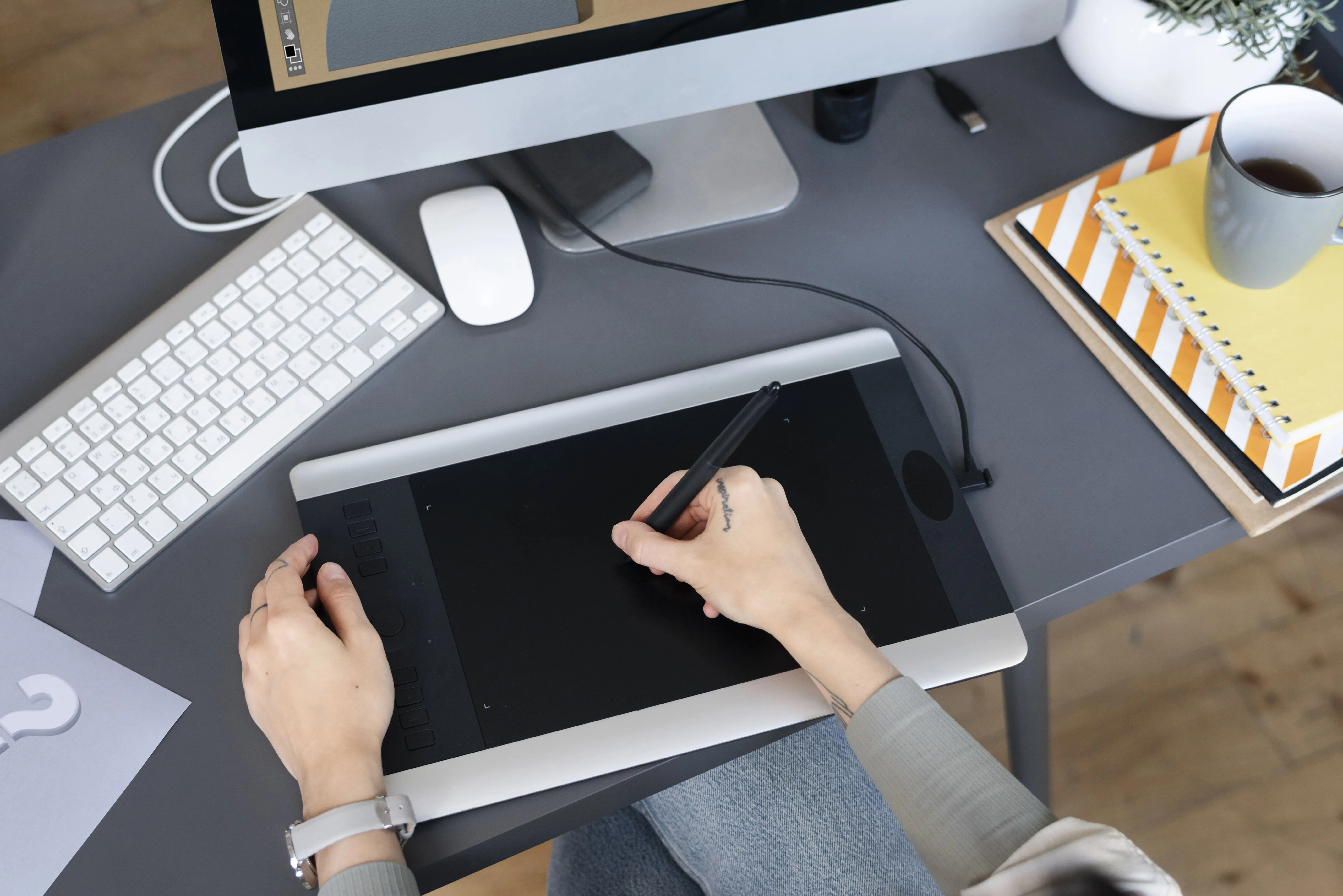Mobile and web applications have become essential tools for businesses and individuals, shaping the way we interact, work, and access information. But with thousands of apps out there, how do you make sure yours stands out? The answer lies in thoughtful UX/UI design—the art of crafting seamless, intuitive, and engaging user experiences.
When users download an app, their first interaction is often with its design. A well-designed app leaves a lasting impression, guiding users effortlessly and creating a sense of satisfaction. When we work on projects, like the ones we’ve developed for personalized user experiences, the goal is always to create an environment that users find engaging and easy to navigate.
For instance, during the development of a cleaning services app, we focused on creating straightforward booking flows that reduced time-to-action and enhanced user satisfaction (see case study). This attention to detail is what turns a good app into one that users want to return to.
As businesses strive to create apps that users trust and depend on, prioritizing thoughtful design is essential for long-term success.
A Success Story of Thoughtful Design
One of the best examples of our user-centered design approach is a mental health therapy app. Designed to provide accessible mental health support, this app has become a game-changer for users who are looking for a seamless, supportive experience for managing their well-being.
This app has seen significant results in user engagement, with more than 50,000 daily active users (DAU) and an 11% conversion rate from downloads to paid subscriptions. With these kinds of metrics, the app has rapidly approached a $1M annual recurring revenue (ARR), showing the powerful impact of focusing on both UX/UI solutions and robust back-end performance.
The intuitive design and personalization features of the app are key to maintaining this high level of engagement (see case study).

Key Elements of UX/UI Design That Ensure App Success
For any app to thrive, its design must focus on the needs of its users while providing functionality that’s intuitive and accessible. Here are the main elements we focus on:
1. Intuitive Navigation and Interface
The most successful apps guide users through a logical, straightforward process. For example, during the development of the mental health therapy app, we focused on simplifying the user flow to create an experience that feels seamless and easy to navigate (see case study).
2. Visual Appeal: Balancing Aesthetics and Functionality
Visual design is more than just looking good—it needs to support the user’s journey. In the development of an inventory management app, we made sure users could access information quickly without being distracted by overly complex designs, maintaining a balance between beauty and practicality.
3. Accessibility and Flexibility
An app should work for everyone. We consider accessibility features like voice commands and high-contrast modes to make sure every user, regardless of ability, has an easy time navigating the app. Moreover, we ensure our designs perform consistently across various devices and screen sizes, which we do in every project to enhance user experience. For example, with the AI-powered document automation app, we made sure the app functions seamlessly on multiple platforms and devices, ensuring that users get the same great experience everywhere (see case study).
4. Performance and Responsiveness
It’s not enough for an app to look great—it also needs to work flawlessly. Our team ensures that apps, even those with heavy data loads, perform efficiently. For instance, the AI-powered document automation app had to handle a lot of data quickly and without lag, and we optimized its performance to ensure that users had a smooth, responsive experience even during peak usage (see case study).
These design elements don’t just make an app pretty—they make it functional, efficient, and most importantly, easy for users to interact with.
How UX/UI Design Boosts User Engagement and Retention
Great design isn’t just about aesthetics—it’s about creating lasting relationships with users. Here’s how thoughtful UX/UI design contributes to user engagement:
1. Building a Positive User Journey
A smooth journey through an app keeps users engaged. We’ve seen this firsthand in the mental health therapy app, where users are guided step-by-step with intuitive onboarding flows and personalized dashboards. These elements make the app feel more personal and engaging (see case study).
2. First Impressions Matter
Users make snap judgments within seconds of opening an app. A slow, clunky, or confusing interface can lead to higher abandonment rates. But when design is clean and the navigation is clear, users trust the app and are more likely to come back. For example, the social app for calls and conversations on various topics uses sleek design elements to ensure that the first interaction is simple and engaging, setting users up for a positive experience (see case study).
3. Micro-Interactions and Feedback
Small animations or interactions—like a subtle notification confirming a user’s action—make the app feel more alive and responsive. These details help create positive emotions that encourage users to engage further with the app. The cleaning service app, for instance, includes a subtle animation when booking a service, ensuring that users feel confident that their request has been received (see case study).
Incorporating these elements ensures that users not only engage with the app but are also motivated to return and continue using it over time.

Why Choose Olearis for UX/UI Design
Choosing the right partner for your app’s design can make or break its success. Here’s why clients trust Olearis:
- Proven Expertise: We specialize in designing apps that solve real-world problems. Our designs are built on years of experience in mobile and web development across industries, from wellness to logistics, and we’ve seen tangible improvements in user engagement and satisfaction. You can explore some of our best work in our case studies.
- User-Centered Approach: We don’t just design for aesthetics; we design for people. We invest time in understanding your target audience, ensuring that every feature aligns with user needs, making the app intuitive and effective.
- Seamless Development: From concept to launch, our team handles every step of the process. We take care of wireframing, prototyping, and deployment, making sure the development process is cohesive and efficient.
- Results-Driven Design: Our designs are built with measurable outcomes in mind. For example, the cleaning service app we developed saw a significant reduction in time-to-action for users, improving booking efficiency by 25% (see case study).
- Fast, Flexible Delivery: Time is of the essence, and we prioritize delivering high-quality apps quickly. Using frameworks like Flutter, we can rapidly design and deploy without sacrificing functionality or aesthetics.
Investing in UX/UI as a Growth Strategy
Thoughtful UX/UI design is more than an aesthetic upgrade—it’s a strategic investment that drives app success. By focusing on user-centered experiences, businesses can captivate, engage, and retain their audiences. From intuitive navigation to appealing interfaces, great design ensures that every user interaction adds value and satisfaction.
Choosing the right partner for app development is crucial. Look for a team with expertise in both design and app development, who understand how to balance functionality with visual appeal. Olearis specializes in creating designs that transform ideas into impactful digital products.
Ready to elevate your app’s user experience? Partner with Olearis today and let us help you create solutions that stand out in a competitive market. (view case studies)



